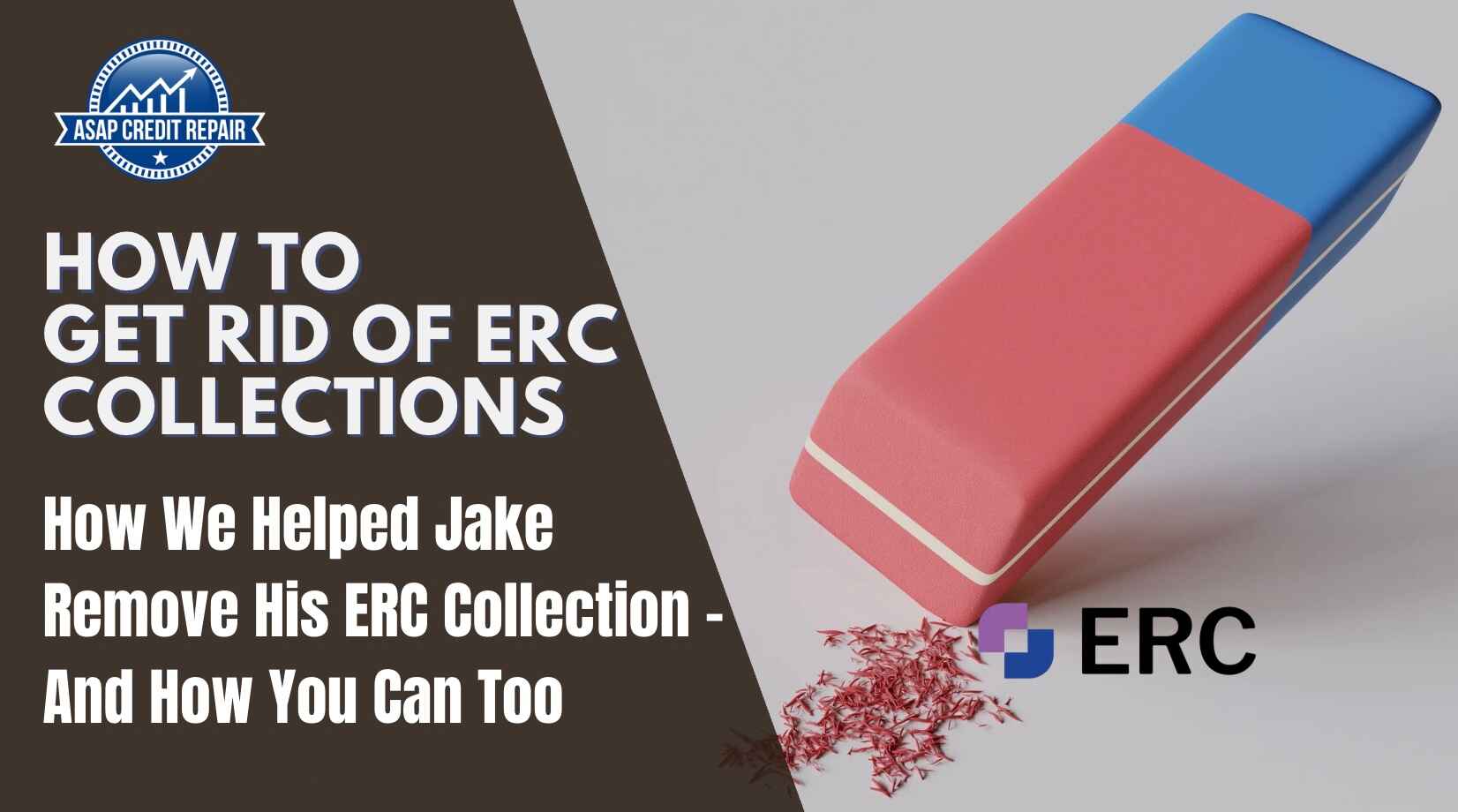How We Helped Jake Remove His ERC Collection
And How You Can Too…
Jake had a problem.
A few months ago, he applied for a car loan, thinking his credit was solid. But when the lender pulled his credit report, an ERC collections account had tanked his score.
"I had no idea this was even there," Jake told us. "I never got a notice. I don’t even know what this is for."
Like many others, Jake was stuck with a debt that didn’t seem fair. He tried disputing it online, but ERC verified the debt and it remained on his credit report. Frustrated and feeling hopeless, he reached out to us.
That’s when we got to work.
Step By Step To Remove ERC Collections
ERC collections can make you feel worried. But you can do something about it. You can try to take them off your credit report. This guide will help you. We will go step by step
Step 1: Investigate the ERC Collection Account
The first thing we did was pull Jake’s full credit report to get a complete picture of the ERC collection. We looked for key details:
✅ The original creditor (who ERC bought the debt from)
✅ The date of first delinquency (to check if it was legally reportable)
✅ Any validation letters ERC may have sent Jake
✅ Any errors in reporting that could get it removed
One red flag stood out: The collection account didn’t match any debt Jake recognized. That meant we had leverage to challenge it.
Step 2: Demand ERC Validation & Apply Pressure
Under the Fair Debt Collection Practices Act (FDCPA) and the Fair Credit Reporting Act (FCRA), collection agencies must prove that a debt is valid before they can legally report it.
We sent ERC a debt validation request demanding the following:
📌 A copy of the original signed contract proving Jake agreed to the debt
📌 A full payment history from the original creditor
📌 Proof that ERC had the legal right to collect
📌 Proof that Jake was properly notified before ERC reported it
🚨 What Happened Next?
ERC struggled to provide proper documentation. They sent a generic letter claiming the debt was valid—but no signed contract, no payment history, and no proof of proper notification.
That was a big mistake on their part.
Step 3: Escalate to the Credit Bureaus
Since ERC failed to fully validate the debt, we filed disputes directly with the credit bureaus (Experian, Equifax, and TransUnion) citing:
🔹 Lack of proper documentation – If a collection agency can’t prove the debt is valid, they must delete it.
🔹 Potential reporting violations – If ERC didn’t notify Jake properly, that’s a violation of consumer rights.
🔹 Inaccuracies in the reporting – The balance was inconsistent across different credit reports.
With no solid proof, ERC was forced to delete the collection from Jake’s report within 30 days.
Recommended Story: Felix’s Repossession Nightmare – How He Got a Repo Removed & Rebuilt His Credit
The Aftermath: ERC Collection Removal
✅ Final credit score: 729 (+87 points)
✅ ERC collection permanently removed
✅ Approved for his car loan at a low interest rate
Jake couldn’t believe it.
“Honestly, I thought I was stuck with this forever. I didn’t realize I had rights. You guys literally saved me thousands in interest!”
Here’s the official deletion letter Jake received:
Advanced Strategies for Removing ERC Collections
If you're dealing with an ERC collection, there are multiple ways to get it removed. Most people only know about the basic dispute methods, but here are some advanced and little-known strategies to wipe it off your credit report.
1. Statute of Limitations (SOL) Loophole 🔍
Debt collectors often try to collect on debts that are past the statute of limitations for legal enforcement. This varies by state but is typically between 3-6 years. If your ERC collection is beyond this period:
✅ Do NOT acknowledge the debt (this can reset the SOL clock)
✅ Send a cease-and-desist letter stating that the debt is legally unenforceable
✅ File disputes with the credit bureaus citing an expired statute of limitations
Most people don’t realize that even if a debt is beyond the SOL, collectors may still try to report it! Knowing your rights here is a game-changer.
Recommended: The Role of State Laws in Debt Collections Etc
2. Method of Verification (MOV) Dispute 🕵️♂️
When you dispute a collection, the credit bureaus must verify it using original source documents—not just ERC’s word. Most disputes get "verified" because the bureaus only check their own system (e-Oscar) instead of real records.
📌 How to challenge this:
✅ If ERC "verifies" the debt without providing proof, send a Method of Verification Request to the credit bureau demanding:
- The name of the person who verified it
- The method they used to confirm the debt
- Copies of the documents they used
If they can’t provide real documentation, the debt must be removed!
3. Consumer Financial Protection Bureau (CFPB) Complaint ⚖️
If ERC is refusing to remove a debt despite errors or lack of proof, escalate the case:
📌 How to file a CFPB complaint:
✅ Gather all documentation proving the error
✅ Submit a complaint at www.consumerfinance.gov
✅ Explain how ERC has violated the law and failed to properly validate the debt
Collection agencies take CFPB complaints very seriously. Many ERC collections disappear within weeks after an official government complaint.
Guide to Negotiating a Settlement for ERC Collections
Sometimes, negotiating a settlement is the best option. We’ve put together a detailed step-by-step guide on how to negotiate a debt settlement and get the best possible outcome.
📌 Click here to access the guide: Download the ERC Debt Settlement Guide
This guide covers:
✔️ How to locate the collection agency
✔️ The exact script to use when negotiating
✔️ What percentage to offer based on the debt’s age
✔️ How to get a pay-for-delete agreement in writing
✔️ Steps to take after payment to ensure removal from your credit report
Need Help Removing ERC Collections?
ERC collections can feel overwhelming, but with the right approach, you can get them removed.
💡 Not sure which strategy will work for your case? Let’s take a look together.
🔹 Start a chat with us now → [Click Here]
🔹 Call us at 📞 888-656-0803
🔹 Text us at 📲 281-545-5001

